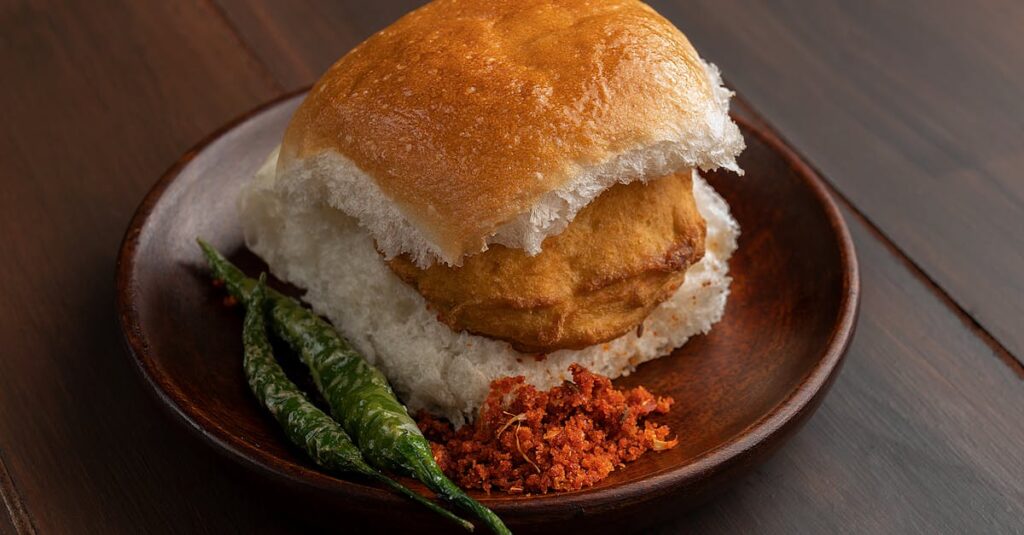Introduction
If you’ve ever wandered through the streets of Mumbai, you’ve likely come across a colorful array of food stalls, bustling local markets, and the unmistakable smell of street food wafting through the air. Whether it’s the crispy vada pav or the tangy pani puri, Mumbai’s food scene is as diverse as its people. But what is it about Mumbai’s local food culture that is influencing India’s culinary future? Let’s explore how this vibrant city is not only preserving traditional flavors but also setting the stage for new trends that are making waves in kitchens across the country.
The Street Food Revolution: A Snapshot of Mumbai’s Flavor Explosion
Street food in Mumbai isn’t just about quick bites; it’s a way of life. You’ll find crowds gathering around the humble pav bhaji stalls or sipping on sugary sweet falooda as they chat with friends. But what’s truly remarkable is how this street food culture has evolved. Think back to the days when vada pav was simply a snack for the working class. Today, it has become an iconic symbol of Mumbai, embraced by food enthusiasts across all walks of life.
This transformation is not unique to vada pav alone. Pani puri, chaat, and even the iconic Bombay sandwich have seen modern twists that retain their nostalgic flavors while appealing to younger generations. Many food startups and home chefs in Mumbai are experimenting with different ingredients, presenting these traditional dishes with a contemporary touch, yet keeping the essence intact.
The Role of Technology in Mumbai’s Culinary Landscape
With the rise of food delivery apps and online recipe sharing platforms, Mumbai’s street food scene is more accessible than ever before. In fact, some of the best-loved local joints now offer their specialties through apps like Zomato or Swiggy. What once required a trip to a crowded street corner can now be enjoyed from the comfort of your home.
But this isn’t just about convenience; it’s also about opening the door to innovation. Local chefs are now experimenting with fusion dishes, incorporating global flavors into the beloved local staples. A simple vada pav can now be topped with cheese, or a plate of pani puri might come with a burst of avocado for a refreshing twist. This tech-enabled transformation is helping Mumbai’s food culture reach new heights and evolve in ways that would’ve been unthinkable a decade ago.
The Global Influence of Mumbai’s Food Trends
It’s not just Mumbaians who are taking notice of the city’s food scene—people across the globe are now curious about the flavors and dishes that define Mumbai. Thanks to platforms like Instagram, food bloggers and influencers have propelled local dishes into the global spotlight. Whether it’s the crunchy, spicy pav bhaji or the sweet and sour combination of dahi puri, the world is now looking to Mumbai for culinary inspiration.
One key example of this is the rise of Indian fusion cuisine. Chefs in Mumbai are incorporating international techniques, local ingredients, and indigenous flavors to create innovative dishes. Take the rise of “Mumbai-style” tacos, where chefs blend the city’s street food culture with Mexican influences. Similarly, global food trends like plant-based eating are also making their way into the local food scene, with Mumbai’s chefs offering vegan takes on traditional favorites.
The Importance of Preserving Tradition While Embracing Change
In a city like Mumbai, balancing the old with the new is essential. While fusion foods and tech-enabled food trends are gaining popularity, the city still has a deep respect for its culinary heritage. You can’t walk down any street without spotting a small shop selling authentic misal pav or a chaiwala brewing the perfect cup of chai. These are the foods that have sustained the city for generations, and they aren’t going anywhere.
But it’s not just about holding onto the past. Mumbai’s food culture is evolving, and this dynamic fusion of tradition and innovation is what makes the city’s culinary future so exciting. Whether it’s experimenting with new flavors or preserving the art of classic recipes, the city’s chefs are proving that there’s room for both the old and the new in Mumbai’s food scene.
The Role of Home Cooks and Startups
One of the most exciting developments in Mumbai’s culinary world is the rise of home cooks and small food startups. These small businesses are playing a crucial role in shaping the food culture of the city. From home bakers offering artisanal bread to chefs creating high-end gourmet meals in their kitchens, Mumbai is seeing a surge of culinary entrepreneurs who are pushing the boundaries of what we consider traditional food.
In fact, many of these home-based businesses are redefining how people view local food. Take, for example, the rise of artisanal sweet shops offering modern takes on traditional Indian sweets. You may find a contemporary twist on the classic gulab jamun, or a fusion dessert combining local flavors with global techniques. These startups are bringing innovation and creativity to the forefront, while still respecting the roots of the city’s food traditions.
Food Festivals: Celebrating Mumbai’s Culinary Diversity
Food festivals have become a key platform for showcasing Mumbai’s local flavors and the innovative creations of its chefs. Festivals like the Mumbai Food Truck Festival or the Street Food Festival attract thousands of people each year, eager to taste everything from spicy chaats to gourmet burgers. These events provide a space for culinary artists to push the envelope and experiment with new ideas while staying true to their roots.
Additionally, these festivals offer a space for cross-cultural exchange, where people from various parts of the world come together to explore the city’s diverse food offerings. It’s a melting pot of flavors, and it’s no surprise that these festivals are drawing attention from food lovers beyond Mumbai.
Conclusion: The Future of Mumbai’s Food Culture
So, where is Mumbai’s food culture headed in the future? If the past decade is any indication, we can expect even more innovation and fusion. Technology will continue to play a role in connecting people to local food vendors, and the international appeal of Mumbai’s dishes will only grow stronger. However, despite the growing influence of global trends, Mumbai will remain a city deeply connected to its food roots.
For anyone exploring the culinary future of India, Mumbai is the place to be. It’s a city where food is not just about sustenance but about storytelling, creativity, and community. Whether you’re trying a modern twist on a classic snack or savoring an age-old dish in its most authentic form, Mumbai’s food scene offers something for everyone. The future of Indian food is being written here—on the streets, in kitchens, and at the tables of this incredible city.

